

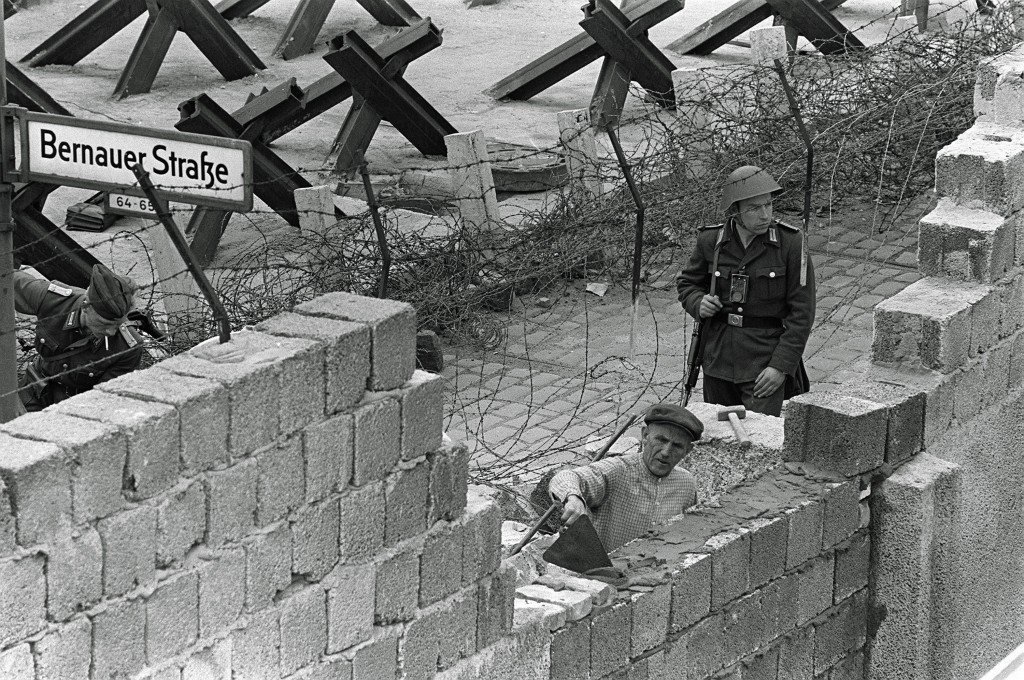

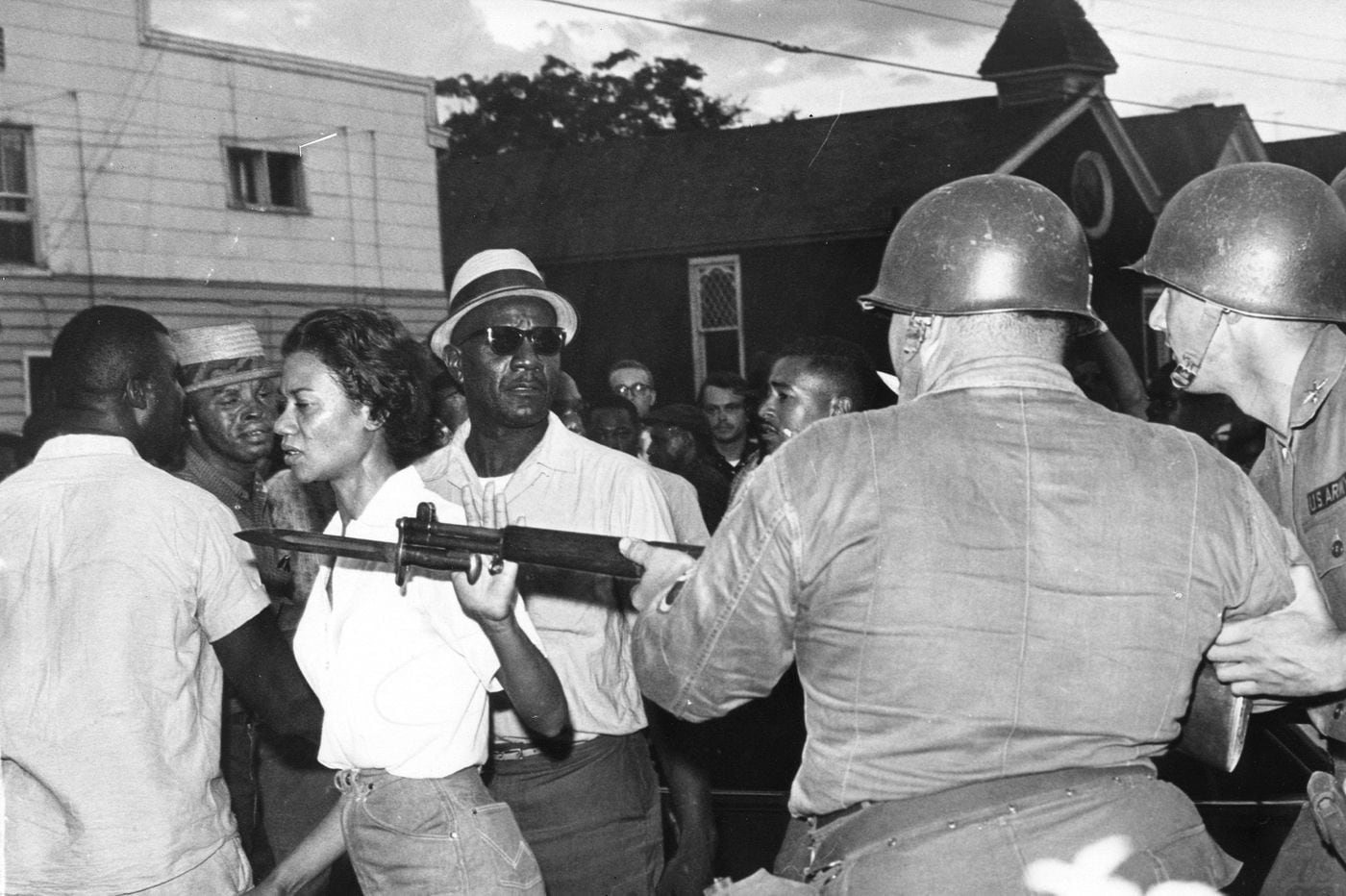

The Cold War Part 2 (1956-1963): Near the Brink
The era from 1956 to 1963 during the Cold War was the closet America ever existed in terms of being close to a war with the Soviet Union. Tensions were extremely high back then. There were the Bay of Pigs Crisis, the growth of the Civil Rights Movement, the Berlin crisis, and the Presidency of John F. Kennedy. That era was a transitional period after the Suez Canal Crisis and before Operation Rolling Thunder during the Vietnam War. Speaking of Vietnam, this era saw a gradual, overt involvement of American forces in the Vietnam Civil War. There are constant debates about JFK's role in increasing American involvement in the Vietnam War, but it is true that JFK didn't start the Vietnam War. American funding of South Vietnam existed since the days of Eisenhower. Also, JFK would never have expanded the Vietnam War to the same extent as LBJ have done. LBJ and JFK had disagreements with American policy involving the Vietnam Civil War (as explained by Robert McNamara). The Cold War wasn't just about international affairs. It influenced the expansion of various social movements like the Civil Rights Movement, the Women's Rights Movement, the Beat Movement, the anti-war movement, etc.
Dwight D. Eisenhower was a paradoxical center-right President. He criticized the military industrial complex, and he oversaw an expansion of cities plus the suburbs. He defended Social Security and many New Deal programs. The issue with Eisenhower was that he took a very soft approach in terms of civil rights issues, and he was slick to advance Western imperialism overseas. He sent in the National Guard to help black children to integrate in white schools, but he never promoted immediate equality and justice for black Americans overtly. He said that he was forced to follow federal statues that desegregated schools. This era ended with the evil assassination of President John F. Kennedy. To this every day, we haven't completely gotten over his passing. Many of the events that we witness in 2020 came from the political changes and social changes that are related to the events after November 22, 1963. JFK was an eloquent, inspirational capitalist politician. He had his strengths and weaknesses. His aspirations and idealism captivated Americans. That is why his era was called Camelot which had a dream vision of what society could be, but that dream didn't equate into the reality of how racism plus other injustices in general harmed the lives of black people, poor people, people of color, and all oppressed people. JFK's strength was his capability for intellectual curiosity and growth. He grew to be more militant in terms of advocating for civil rights, in signing the Nuclear Test ban Treaty with the Soviet Union, and standing up to Big Oil. Many of his policies behind the scenes from supporting Lumumba, refusing to support Israel having nuclear weapons, and allying with the Indonesian Nationalist Sukarno are not known by many people. Therefore, we have to look at the nuisance of history and be better people in general.
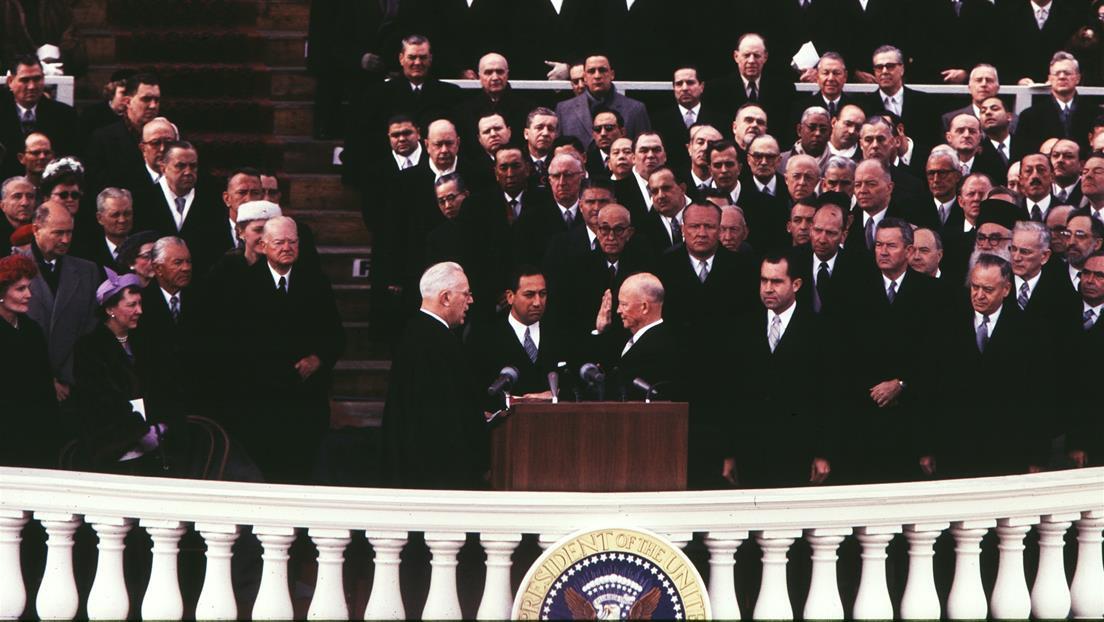
Dwight D. Eisenhower's Legacy
To understand Dwight D. Eisenhower's legacy fully, you have to look at the events of the 1950's chronologically. Eisenhower allowed John Foster Dulles to be the Secretary of States. Dulles was a war hawk and was militantly anti-Soviet. JFK would later fire Dulles because of his actions involving the Bay of Pigs fiasco. By February 28, 1953, the Balkan Pact was signed by Yugoslavia, Greece, and Turkey. The pact wanted to deter Soviet expansion. After Stalin died on March 5, 1953, NATO debated on a fresh start. The Soviet troops ended the Uprising of 1953 in East Germany on June 17, 1953. By May of 1954, the Hukbalahap revolt in the Philippines was defeated. July 22, 1954 was when India annexed the Portuguese territories of Dadra and Nagar Haveli. On February 25, 1956, Nikita Khrushchev criticized Stalin on the speech, "On the Personality Cult and Its Consequences." It was delivered at the closed session of the 20th Party Congress of the CPSU. The speech marks the beginning of the De-Stalinization. Violence happened in Poznan, Poland after anti-communist protests on June 28, 1956. By July of 1956, the United States and the UK cancelled offers of aid on the construction of the Aswan Dam in Egypt due to its arms purchases from the Eastern Bloc. Nasser retaliated by nationalizing the Suez Canal. The October 23, 1956 Hungarian Revolution of 1956 was made up of socialists and progressives who wanted to end the Soviet domination of Hungary. They were crushed by the Soviet military that reinstated a Stalinist Communist government. On October 29, 1956, the Suez Canal existed. This was when France, Israel, and the UK attacked Egypt with the goal of removing Nasser form power. International diplomatic pressure forced the attackers to withdraw.
Canadian Lester B. Pearson encouraged the United Nations to send a peacekeeping force (the first of its kind) to the disputed territory. For this, Lester B. Pearson won a Nobel Peace Prize for his actions. Later, he became Prime Minister of Canada. By the year of 1956, the Vietnam Civil War expanded with the forming of the Viet Cong insurgency in South Vietnam (which was sponsored by North Vietnam). The Eisenhower Doctrine was created on January 5, 1957. It wanted America to defend Iran, Pakistan, and Afghanistan from Communist influence. Israeli forces left the Sinai which they occupied back in 1956. This was on January 22, 1957. The UK detonated its first hydrogen bomb on May 15, 1957. The Strategic Air Command made 24/7 nuclear alert until 1991 to protect from a Soviet ICBM surprise attack. Sputnik satellite from the Soviets flown into space on October 4, 1957 including Avor Arrow was revealed. Sputnik 2 was launched with Laika or the first living being on board by November 3, 1957. Later, America built more fallout shelters to survive a nuclear attack. The military expands in America. Khrushchev claimed that Soviets have more missile capability than America and challenges America to a missile shooting match to prove it. The Djuanda declaration was made. It said that oceans and land in Indonesia are unified. NATO has its first summit in Paris, France by December 16-19, 1957. Mao made his Great Leap Forward on January of 1958. America showed its first artificial satellite called Explorer 1 on January 31, 1958. The 2nd Taiwan Strait crisis happened when China bombs Quemony. Finally, Fidel Castro won the Cuban Revolution by January 1, 1959. He overthrew the dictator Batista via guerrilla warfare.

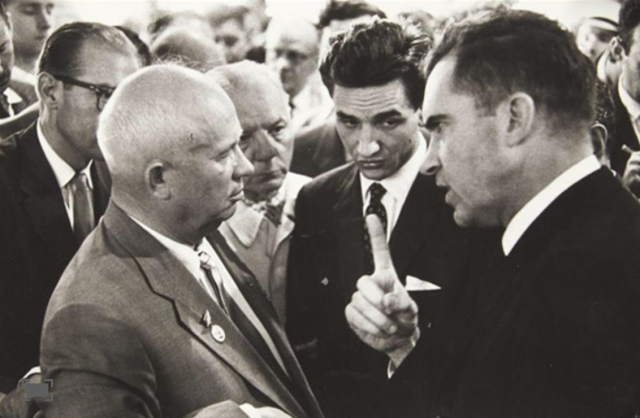
He inspired similar movements in Latin America. Crisis in Tibet happened in 1959. The Kitchen Debate was when U.S. Vice President Richard Nixon and Premier Khrushchev debated communism and capitalism on July 24, 1959. Explorer 6 from America is in orbit to photograph the Earth on August 7, 1959. Khrushchev visited America for 13 days and goes to Sea World. The NLF was created in December of 1959. It was a Communist insurgent movement that wanted to overthrow the anti-communist South Vietnamese government. North Vietnam and the USSR fund the NLF movement. France tested its atomic bomb on February 16, 1960. By April 1960, Jupiter IRBM missiles were sent to Italy. It was used to be in close range of the Soviet Union.On May 1, American pilot Francis Gary Powers was shot down in his U-2 spy plane while flying at high altitude over the Soviet Union. This was the U-2 incident, and it was embarrassing for the Eisenhower administration. The June 1960 split among the Soviets and China was about China accusing the Soviets of a superiority complex. The Chinese Communists believed that their system was superior. The Congo crisis started on July 1960. Communist revolts happened in Laos.
By September 23, Nikita Khrushchev came to NYC to talk to the U.N. General Assembly. He continued to visit America for a month. Dwight D. Eisenhower wanted to overthrow Castro bad despite his warnings about the military industrial complex (which is a real entity that has ruined nations for years via imperialism, miltiarism, economic exploitation, and destruction of so many lives). On January 3, 1961, President Eisenhower ended diplomatic relations with Cuba. The end of Eisenhower's President related to his goal of ending the Cuban Revolution. Dwight D. Eisenhower was the 34th President of the United States of America. He was a military veteran as the five star general in the Army and Supreme Commander of Allied Expeditionary Force in Europe. That is why he led in the planning of the historic Normandy invasion of France to liberate millions from Nazi tyranny. He was one of the last of the center-right Republicans that didn't want revolutionary change, but he wasn't so extreme that he wanted permanent austerity either. He was of Pennsylvanian Dutch ancestry. He was a Cold Warrior. He gave economic resources to South Vietnam, he supported the military coups in Iran plus Guatemala, and he sent 15,000 soldiers during the 1958 Lebanon crisis. His more moderate side was when he opposed the Suez war of 1956, he continued New Deal programs, he disagreed with Joseph McCarthy's extremism, he signed the National Defense Education Act, and he expanded Social Security. Eisenhower had a mixed record on civil rights. He signed the Civil Rights Act of 1957, but that law had no teeth to enforce civil rights policies. He sent Army troops to enforce federal court orders to integrate schools in Little Rock, Arkansas. Eisenhower is heavily admired by many today. We know that Eisenhower was not the worst President. We know who is the worst President in recent history. That's self explanatory. Dwight D. Eisenhower was a man who wanted to use rationality, a stable course, and a stable transition in terms of his personal policy decisions. He was a transitional President that many people don't know, but he was much more engaging on issues than many people realize. Eisenhower was more interested in foreign policy or international affairs than domestic affairs. With him not wanting to outright eliminate New Deal programs, he was popular among liberal Republicans and many conservative Republicans hated his views. From being the promoter of the Interstate Highways system to other policies, Eisenhower was an unique Presidential person.


JFK's Start
The mystique about John F. Kennedy is still here with us. The truth is that we have 2 extreme lies about JFK. The first lie is that JFK was an reactionary extremist. The other lie is that he was very progressive superhero. The truth is that President John F. Kennedy was a liberal President who wanted to use his intellectual curiosity to establish a better America. He had his strengths and imperfections like all people have. Yet, he had the strength to grow and be more progressive into 1963. The start of President John F. Kennedy started with his family. He was born on May 29, 1917 at Brookline, Massachusetts. He was raised in a wealthy Catholic family. His father was Joseph Kennedy (where his competitive side came from) and Rose Fitzgerald (where his more people person side came from). Back in the day, many Catholic people faced taunts and overt bigotry. Yet, JFK excelled in many areas of his life. He went into many schools to gain education especially in politics and economics. He traveled with then Ambassador Joseph Kennedy into London. Joseph Kennedy was controversial as he was known by his peers as a person who said anti-Semitic comments. Kennedy had a close friendship with Viscountess Astor and their correspondence is replete with anti-Semitic statements (according to the author Edward Renehan). Joseph P. Kennedy told the reporter Joe Dinneen: "It is true that I have a low opinion of some Jews in public office and in private life. That does not mean that I. ... believe they should be wiped off the face of the Earth...Jews who take an unfair advantage of the fact that theirs is a persecuted race do not help much...Publicizing unjust attacks upon the Jews may help to cure the injustice, but continually publicizing the whole problem only serves to keep it alive in the public mind."
Of course, anti-Semitism is wrong and evil period. President John F. Kennedy was a World War II Navy veteran who saved many lives. After the war, he came into the House of Representatives and the Senate. JFK's father wanted him to be President, but first, JFK had to establish political seniority. He did with his experience in the Congress. During that time, he criticized Western or French imperialism against Vietnam during the 1950's which was taboo. John F. Kennedy visited Vietnam in 1951. He criticized colonialism as preventing the fires of nationalism to spread in the world. His wife was Jacqueline Kennedy (whose maiden name was Bouvier). His 1956 book Profiles in Courage was eloquent and outlined the history of famous Senators. He took on the Mafia via the McClellan Committee, he attacked France for its imperial war against Algeria, and he was once the Vice Presidential candidate for the 1956 Presidential election. By 1960, he publicly called himself a liberal, and he ran for President in the Democratic ticket. The 1960 race wasn't easy. He had to defeat Humphrey, LBJ, and others who ran on the Democratic primary. John F. Kennedy also endorsed immigrant rights with his book on immigrants entitled, "A Nation of Immigrants."


Then Senator John F. Kennedy gave speeches in favor of a higher minimum wage, unemployment insurance, and a separation of church and state (in ending fears that he would be bounded under the Pope's authority to determine legal policy. JFK gave a speech on this issue to many Baptists, and the Baptists applauded his stance. John F. Kennedy explicitly said that the Catholic Church will never dictate to him political policy, and he was courageous plus right to say that). The separation of church and state is the hallmark of any progressive society. I have my faith in God, but I won't use my religious beliefs in infringing on the human rights of another person who is not of my faith. John F. Kennedy chose LBJ as his running mate to compete in the South. It is no secret that RFK didn't like LBJ, because of many reasons.
This tension between Robert Kennedy and Lyndon Baines Johnson was decades in the making. It has been documented by many scholars like the author Robert A. Caro in his book entitled, "The Passage of Power." Decades ago. Lyndon Johnson made comments about RFK's father, Joseph Kennedy, as a pro-Chamberlain type of guy and an appeaser. LBJ low key implied that Joseph Kennedy sympathized with Hitler. That statement was never forgotten by Robert Kennedy. RFK called LBJ a vicious animal and he loves to eat people up politically. LBJ said that he was there when Roosevelt (LBJ was his protege) fired Joseph Kennedy who was once Ambassador to the UK back during World War II. Back in late 1959, John F. Kennedy sent RFK to the LBJ ranch in Texas to see if LBJ would run for President in 1960. Johnson took RFK deer hunting and purposely gave him a high caliber rifle with a loud recoil. The gun knocked RFK to the ground and Johnson said to him, "Son...you've got to learn to handle a gun like a man." During the 1960 campaign, LBJ's campaign spread true rumors that John F. Kennedy was concealing a serious illness. RFK responded to Johnson's close aides with these words, "You Johnson people are running a stinking da___ed campaign and you'll get yours when the time comes." RFK and his allies humiliated LBJ on many occasions when Johnson was Vice President. The biggest irony about Lyndon Johnson was that he was once an opponent of civil rights legislation constantly and became a progressive on civil rights during the 1960's.
Yet, JFK wanted to use political wit. John F. Kennedy defeated Nixon in the debates and in the Presidential race. President John F. Kennedy won the 1960 election after allowing Dr. King to leave jail. Dr. King's father inspired many black people to vote for him. JFK spoke in favor of civil rights, but his administration would be tested on civil rights issues. President John F. Kennedy had a civil rights record a million times better than Eisenhower, but civil rights activists had to push him in getting policies established. Many of his policies would be enacted by President Lyndon Baines Johnson. At the very end of the Eisenhower administration, the hero Lumumba was murdered in Katanga with the support of the CIA. JFK expressed sadness over the incident. January 20, 1961 was when John F. Kennedy gave his historic Inaugural Address. It was a masterpiece of oratory and probably the greatest inaugural address of the later half of the 20th century. JFK spoke themes of freedom, and he criticized Communism as an enemy. It had mixed aspirations and a call to arms to defeat Communism worldwide. So, the Kennedy mystique grew into new heights after that speech. We know that Communism is not monolithic, and not all Communists wanted to destroy the whole world (like not all capitalists are in love with economic injustice though capitalism is an imperfect economic system that readily is exploitative. Stalinism also is antithetical to true socialism). Yet, the world back then was in the Cold War era where provocative rhetoric was the order of the day. President John F. Kennedy was immediately tested by world events. On many events, he made mistakes, and JFK rose to the occasion to make great accomplishments (like his June 11, 1963 speech to advocate for racial equality, his support for affirmative action policies, his opposition to invade Cuba, and his speech to promote universal health for the elderly which would later be called Medicare) on other events too. These facts makes John F. Kennedy's legacy very clear that this man was different than many leaders of his day. He had great leadership qualities.

The Bay of Pigs
The Bay of Pigs Invasion didn't start with President John F. Kennedy, but his views would be shaped by the aftermath of the invasion. The Bay of Pigs invasion was a failed landing operation on the southwestern coast of Cuba in 1961 by Cuban exiles who wanted to defeat Castro plus his Cuban Revolution. The U.S. government covertly funded the operation during the height of the Cold War. Many of the Cuban exiles involved were Pepe San Roman, Felix Rodriquez, Erneido Oliva, etc. The U.S. Government supported the Brigade 2506 against the Cuban Revolutionary Armed forces and the National Revolutionary militia. To start, you have to investigate how it started. Cuba was inhabited by Native Americans originally. The Spanish colonial empire ruled Cuba by the 18th century. Cuban nationalists in the 19th century rebelled against the Spanish Empire especially by the Cuban War of Independence (1895-1898). America fought the Spanish empire and forced the Spanish Army out. Yet, the U.S. government forces made Cuba a pro-Western puppet state. Batista was the total U.S. puppet who allowed the Mafia, large corporations, and other entities to exploit Cuba's resources. Drug trafficking, sexual exploitation, casinos, and authoritarian policies dominated the Batista regime. Later, the Cuban Revolution and the Bays of Pigs invasion occurred. In August of 1960, the CIA contacted the Cosa Nostra in Chicago in trying to invade Cuba plus to assassinate Castro, Raul Castro, and Che Guevara (in exchange for a pro-U.S. government to exist in Cuba and allowing the Mafia to have their monopoly on gaming, prostitution, and drugs).
It is no secret that the CIA wanted to assassinate Fidel Castro. The man overseeing plans for the Bay of Pigs invasion was Richard M. Bissell Jr., the CIA's Deputy Director for Plans (DDP). He assembled agents like David Philips, Gerry Droller, and E. Howard Hunt (many of these people were involved in the 1954 Guatemalan coup). Eisenhower supported the plan. Thousands of people died in the situation. The invasion lasted from April 17-20 1961. General Fulgencio Batista led a coup against President Carlos Prio in 1952. Afterwards, Prio was in exile in Miami. Castro led his movement, and it became successful to overthrow the dictator Batista in December 1958. Castro nationalized American businesses from banks to sugar and coffee plantations. The U.S. severed all ties with Cuba. Then, President Dwight D. Eisenhower allows $13.1 million to the Central Intelligence Agency (CIA) in March 1960 to use tactics against Castro. The CIA aided Cuban counter revolutionaries in their goal of overthrowing Castro. Cuban exiles formed Brigade 2506. There were over 1,400 paramilitaries. They were divided into five infantry battalions and one paratrooper battalion. They were assembled and launched from Guatemala and Nicaragua on boat on April 17, 1961. 2 days earlier, the CIA supplied 8 B-26 bombers. They attacked Cuban airfields and returned to America.
Playa Grion was where the local revolutionary militia via Jose Roman Fernandez fought. The invaders lost the battles fiercely. President John F. Kennedy withdrew air support after being told to do it from many factions. JFK supported Operation Zapata or the Bay of Pigs plan. Eisenhower planned the use of air and naval forces. Without air support, the Cuban exiles had great difficulty to defeat Castro's forces. The invaders surrendered on April 20, 1961. Many of them were placed in Cuban prisons, many of them were killed, and it was a new era. The Cuban Revolutionary Armed Forces defeated the invading force in 3 days. The failed invasion was a U.S. foreign policy failure. Castro remained in Cuba for decades. Cuba became closer to the Soviet Union. President John F. Kennedy accepted responsibility for the debacle, because he was President during that time. He had no choice. Allen Dulles, Charles Cabell, and Richard Bissell resigned by 1962. Still, the CIA would try to kill Castro long after 1961 via Operation Mongoose (which started on November 30, 1961. It was led by United States Air Force General Edward Lansdale). This would be a prelude to the Cuban Missile Crisis in 1962. The far right hated JFK even more after the Bay of Pigs invasion failure

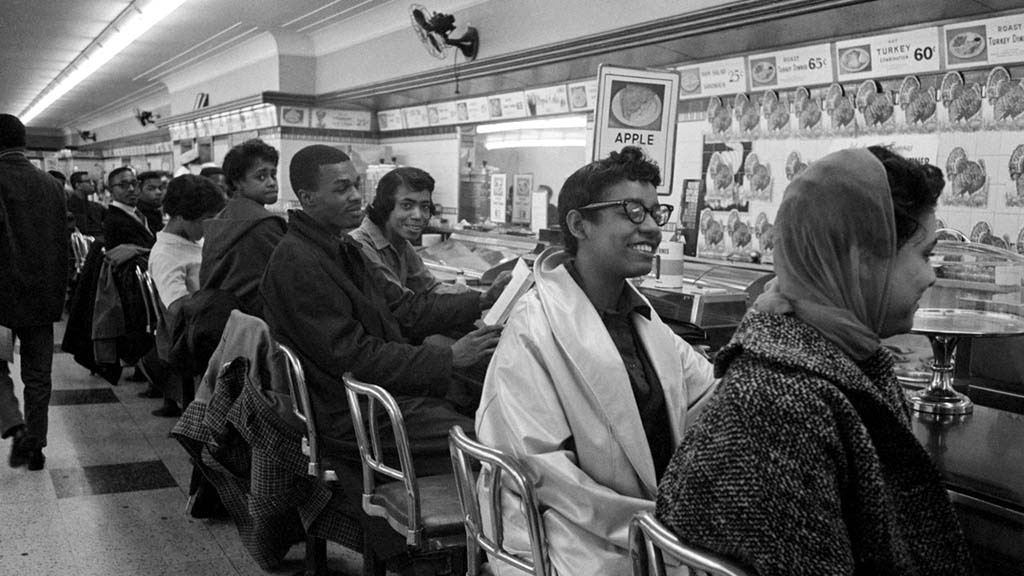
"I refused to give up."
-Myrlie Evers-Williams
Early Civil Rights History (from the late 1950's to the early 1960's)
The mid to late 1950's Civil Rights Movement had new developments all over the place. It was about grassroots working class and poor black Americans standing up for their human rights in opposing tyranny found in Jim Crow apartheid. Many mainstream civil rights leaders had links to the middle class bourgeois circles (like numerous members of the NAACP, the Urban League, etc.), but the vast majority of the black freedom movement always included grassroots, working class, and poor black human beings. By January 7, 1955, Marian Anderson was the first African American to perform with the New York Metropolitan Opera. The executive Order 10590 was signed by President Eisenhower on January 15, 1955. This formed the President's Committee on Government Policy to enforce a nondiscrimination policy in Federal employment. Protesters from CORE and Morgan State University (or an HBCU) staged a successful sit in to desegregate Read's Drug Store in Baltimore, Maryland. On May 7, 1955, NAACP and Regional Council of Negro Leadership activist Reverend George W. Lee was killed in Belzoni, Mississippi. Brown II was established by the Supreme Court on May 31, 1955 to desegregate public schools with all deliberate speed. Many states continued to desegregate schools for years to come. Teenager Emmett Till was killed in Money, Mississippi on August 28, 1955. Emmett Till was visiting relatives in Mississippi, and he was from Chicago. A white woman falsely accused Till of sexually harassment. Later, a white racist mob kidnapped Emmett Till, beat him, mutilated him, and killed him. His body was found in a river. His mother was distraught. His mother wanted the public to see his body in the casket in his funeral at Chicago in order for the world to witness what criminals did to her son. Tills's death inspired more people to fight for black freedom. By November 7, 1955, the Interstate Commerce Commission banned bus segregation in interstate travel in Sarah Keys v. Carolina Coach Company, extending the logic of Brown v. Board to the area of bus travel across state lines. On the same day, the U.S. Supreme Court banned segregation on public parks and playgrounds. The governor of Georgia responded that his state would "get out of the park business" rather than allow playgrounds to be desegregated. On December 1, 1955, Rosa Parks refused to give up her seat on a bus, starting the Montgomery Bus Boycott. This occurs nine months after 15-year-old high school student Claudette Colvin became the first to refuse to give up her seat. Colvin's was the legal case which eventually ended the practice in Montgomery.
It is important to note that Rosa Parks was a revolutionary. The common myth promoted by some is that Rosa Parks had a limited role in the freedom struggle. That's a lie. Rosa Parks allied with Malcolm X and Dr. King, she fought police brutality, she worked with the Black Panthers, and she opposed the prison industrial complex for years plus decades. Roy Wilkins was the executive secretary of the NAACP by the end of 1955. 1956 saw more developments of social activism. Georgia Tech president Blake R Van Leer stood up to Governor Marvin Griffin's threats to bar Georgia Tech and Pittsburgh player Bobby Grier over segregation on January of 1956. The end of segregation of schools happened in Wilmington, Delaware. Ninety black leaders in Montgomery, Alabama are arrested for leading a bus boycott on February 1956. Dr. Martin Luther King Jr. was a Southern preacher back then who supported the Montgomery Bus Boycott. The boycott was made up of men, women, and children who got tired of injustice and oppression. Through walking, car pools, and other actions, the boycott was a total success. The Tallahassee, Florida bus boycott began on May 28, 1956. On June 5, 1956, the Alabama Christian Movement for Human Rights (ACMHR) is founded at a mass meeting in Birmingham, Alabama. The Montgomery Bus Boycott was successful by December 20, 1956. By May 17, 1957, the Prayer Pilgrimage for Freedom in Washington, D.C. is at the time the largest nonviolent demonstration for civil rights, and features Dr. King's "Give Us The Ballot" speech. 1957 saw more events. The Little Rock Nine students were escorted to Little Rock Central High School in 1957 by Federal and National Guard troops on September 24, 1957. These students would experience massive abuse by racists, but every students graduated from high school to achieve monumental accomplishments in their respective lives. Sit-ins were in Oklahoma City by 1958. Paul Robeson's autobiography called, "Here I Stand" was released in 1958. Paul Robeson was a famous revolutionary who opposed imperialism and desired freedom. In 1959, desegregation existed in parts of Virginia. Motown was born in 1959 too. A Raisin in the Sun, a play by Lorraine Hansberry, debuted on Broadway on 1959. Lorraine Hansberry was not only a genius writer. She was also a civil rights advocate. On April 18, 1959, King spoke for the integration of schools at a rally of 26,000 at the Lincoln Memorial in Washington, DC. The 1961 film version of A Raisin in the Sun will star Sidney Poitier.

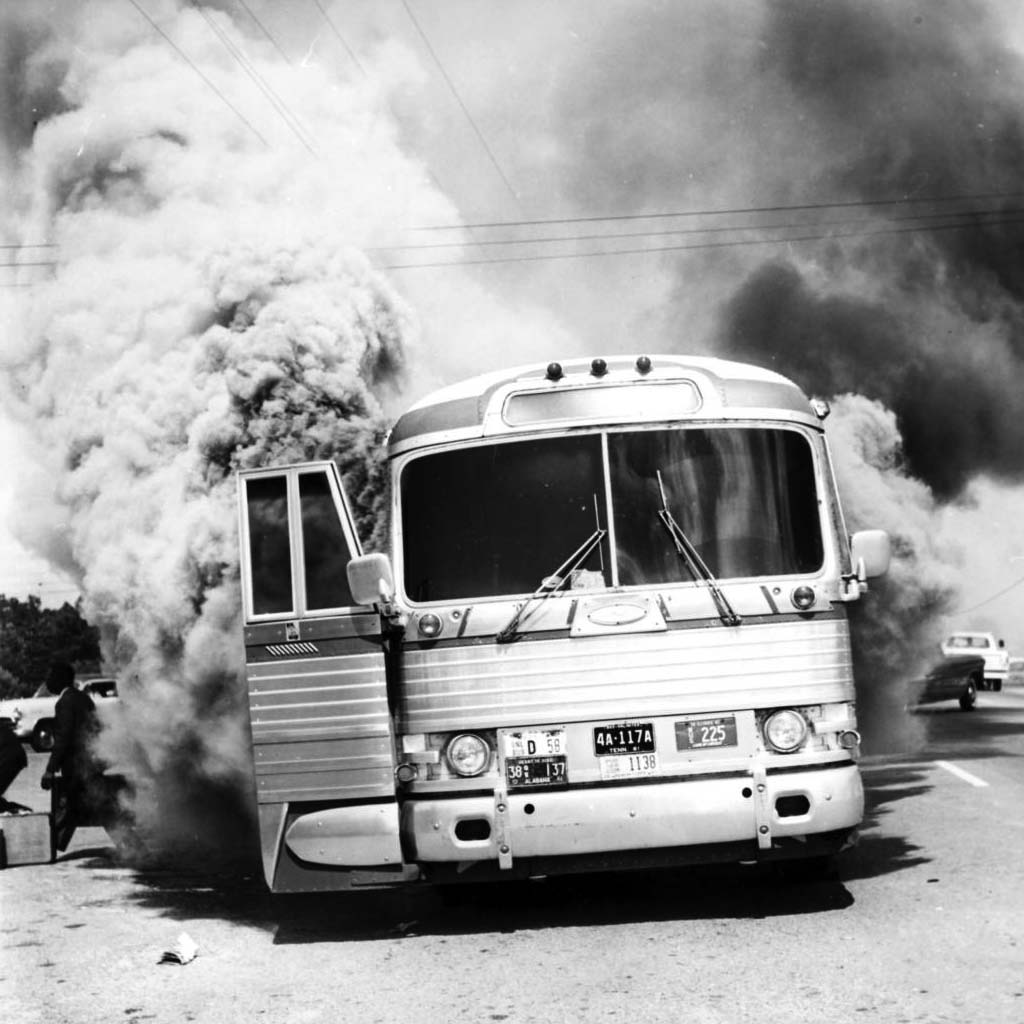
1960 saw the growth of the sit-in movement. This movement existed in the 1950's, but the Greensboro, North Carolina sit-in movement represented a new era of the Civil Rights Movement. It involved 4 black students who started the 6 month Greensboro sit-ins. It was on February 1, 1960. By February 13, 1960, there was the Nashville sit-ins. It was started by Nashville students being trained by activist and nonviolent teacher James Lawson. They are successful by May of 1960. Another leader of the Nashville movement was a black woman named Diane Nash. Dr. King had tax evasion charges on February 17. The Virginia Union students or the Richmond 34 staged sit ins at Richmond, Virginia. They stage sit ins at Woolworth's and at Thalier's department store. James Lawson was expelled from Vanderbilt University for his sit-in participation. Houston has its sit -in on March 4, 1960 via Texas Southern students. They staged it at Houston, Texas at Weingarten's lunch counter. Felton Turner of Houston was beaten, hanged upside down in a tree with the initials KKK carved on his chest on March 7. San Antonio was the first city of Texas to integrate lunch counters. Florida Governor Leroy Collins said that lunch counter segregation unfair and morally wrong. SNCC was created with the blessing of Ella Baker in Raleigh North Carolina. It started on April 15-17, 1960. It wanted to use grassroots organizing in causing justice. SNCC studied nonviolence, and they in many ways acted more revolutionary than the SCLC. Dwight D. Eisenhower signed the Civil Rights Act of 1960. Dr. King was acquitted of tax evasion by an all white jury in Alabama. Dr. King met with Senator John F. Kennedy on June 24, 1960. Ruby Bridges integrated a New Orleans school by the end of 1960 too. On January 11, 1961, 2 African Americans (Hamilton E. Holmes and Charlayne Hunter-Gault) came into the University of Georgia. They were once suspended and ordered reinstated. CORE members were arrested in Rock Hill South Carolina. They desire a sit-in. The Freedom Rides of 1961 was supported by CORE and SNCC. SNCC members Diane Nash and James Bevel took up the cause.
The Freedom Riders, Dr. King, and Rev. Ralph Abernathy were besieged by racists at Rev. Abernathy's First Baptist Church in Montgomery. They were protected by federal marshals. The Albany, Georgia movement would form in 1961. The Albany movement in Georgia didn't have a huge victory, but it was a stepping stone in witnessing the start of the end of Jim Crow apartheid. Lessons were learned. 1962 saw the forming of COFO which included members of SNCC, CORE, and the NAACP. COFO stands for the Council of Federated Organizations that wanted voter registration. On March 20, 1962, the FBI installed wiretaps on NAACP activist Stanley Levison's office. Leroy Willis was the first black graduate of the University of Virginia College of Arts and Sciences on June 1962. Churches were burned and people suffered injustices back then. Yet, heroes fight onward. 1963 was one of the most explosive years of the black freedom struggle. January 18, 1963 was when George Wallace called for segregation forever as Governor of Alabama. From April 3 to May 10, 1963, there was the Birmingham Campaign. It was involved with the SCLC and the Alabama Christian Movement for Human Rights. Kids, women, men, and others were hit with water from firefighters during the Montgomery movement. Homes were bombed. People died, and JFK sent troops to stop the rebellion after black Americans used self-defense against racist terrorists.
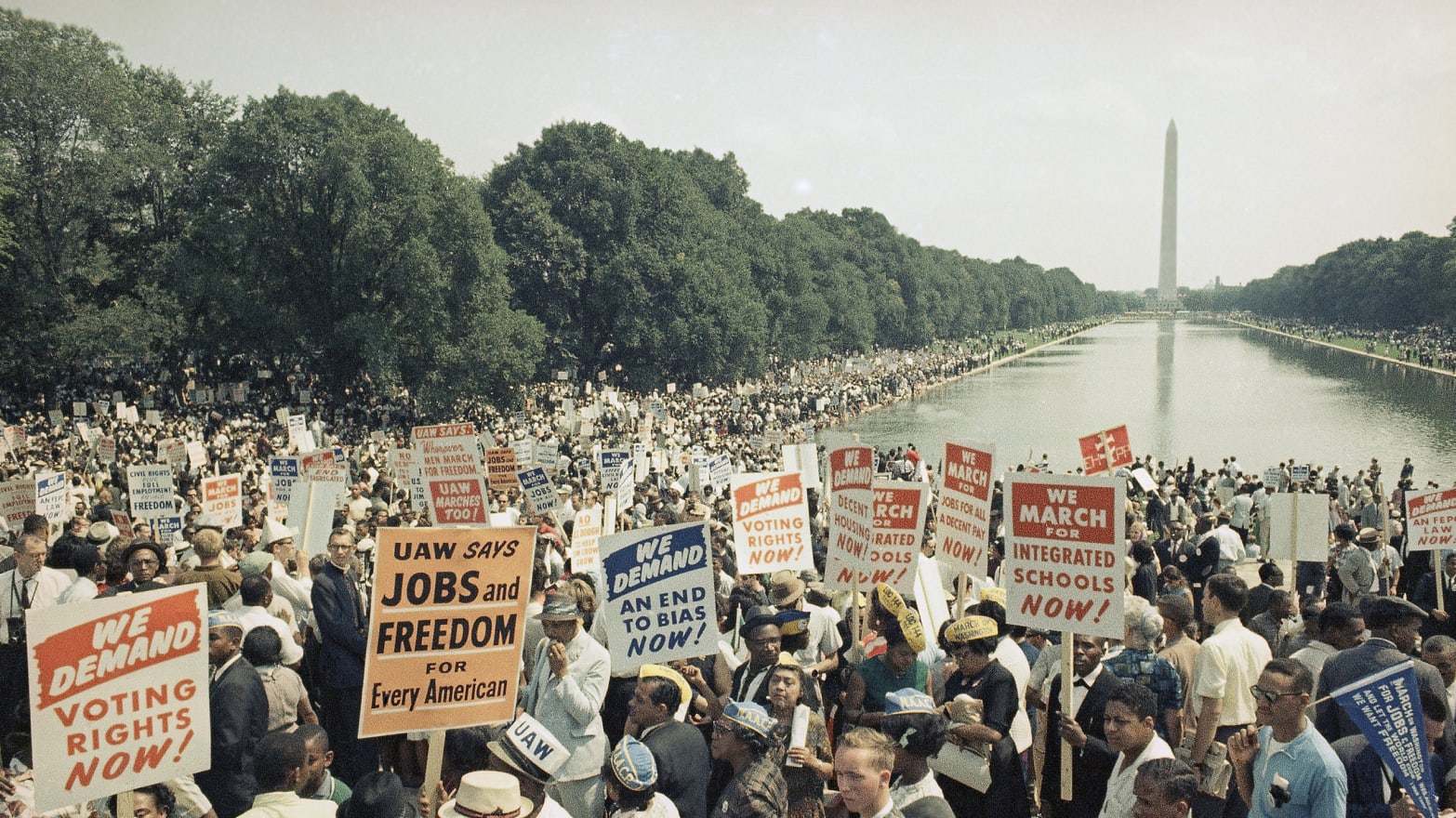
Dr. King wrote his Letter from a Birmingham Jail on April 16, 1963. The letter was a manifesto describing Dr. King's justification for nonviolent resistance against tyranny. He used arguments, historical examples, and moral, spiritual justifications for his actions. He criticized not only the far right White Citizens' Council. Dr. Martin Luther King Jr. also opposed the moderates who wanted the status quo instead of immediate freedom and justice for all. Fannie Lou Hamer was beaten, and the 1963 March on Washington existed. Medgar Evers was assassinated in 1963, and 4 little girls were murdered in Birmingham (the 16th Street Baptist Church). On that day, the Selma Voting Rights Movement was born by James Bevel, Diane Nash, and others via the Alabama Project. Malcolm X, on November 10, 1963 gave his "Message to the Grassroots" speech in fighting white racist power structure and criticizing the March on Washington as co-option of revolution by liberal establishment figures. The poll tax was banned by the Supreme Court via the 24th Amendment on January 23, 1964. There was Freedom Summer in Mississippi to promote voting rights for black Americans in 1964. The Freedom Summer movement was multiracial where black people and white people worked together all over the Deep South. Sidney Poitier won the Academy Award for Best Actor for his role in Lilies of the Field. June 21, 1964 was when Chaney, Goodman, and Schwerner were murdered. They were civil rights workers. The Organization of Afro-American Unity was created by Malcolm X on June 28, 1964. By this time, Malcolm X left the Nation of Islam because of ideological reasons. Malcolm X wanted to execute more political activism in helping black Americans, while the NOI back then didn't wanted to go that route greatly. Malcolm X became more progressive and internationalist in his mindset by opposing the Vietnam War, promoting Pan-African unity, and desiring the total equality of women. That is why Malcolm X said the following words in 1965 (in defending his integrity and ideologies):
"...I don’t think so. How are you going to incite people who are living in slums and ghettos? It’s the city structure that incites. A city that continues to let people live in rat-nest dens in Harlem and pay higher rent in Harlem than they pay downtown. This is what incites it. Who lets merchants outcharge or overcharge people for their groceries and their clothing and other commodities in Harlem, while you pay less for it downtown. This is what incites it. A city that will not create some kind of employment for people who are barred from having jobs just because their skin is black. That’s what incites it. Don’t ever accuse a black man for voicing his resentment and dissatisfaction over the criminal condition of his people as being responsible for inciting the situation. You have to indict the society that allows these things to exist. And this is where I differ with Dr. Hall..."
The Civil Rights Act was finally signed in July 2, 1964. It bans discriminated based on color, religion, race, sex, and national origin in employment practices and public accommodations. Congress passed the Economic Opportunity Act that helps Native Americans in civil and criminal lawsuits. The Mississippi Freedom Democratic Party delegates challenge the racist Mississippi representatives at the Democratic National Convention. Fannie Lou Hamer gave a speech in support of justice there at Atlantic City, New Jersey. SNCC refused to compromise, and this cause many SNCC members to leave the Democratic Party in being more independent politically. Dr. King received the Nobel Peace Prize on December 10, 1964. He was the youngest person to be honored at that time. By December 14, 1964, the Supreme Court upheld the Civil Rights Act of 1964.

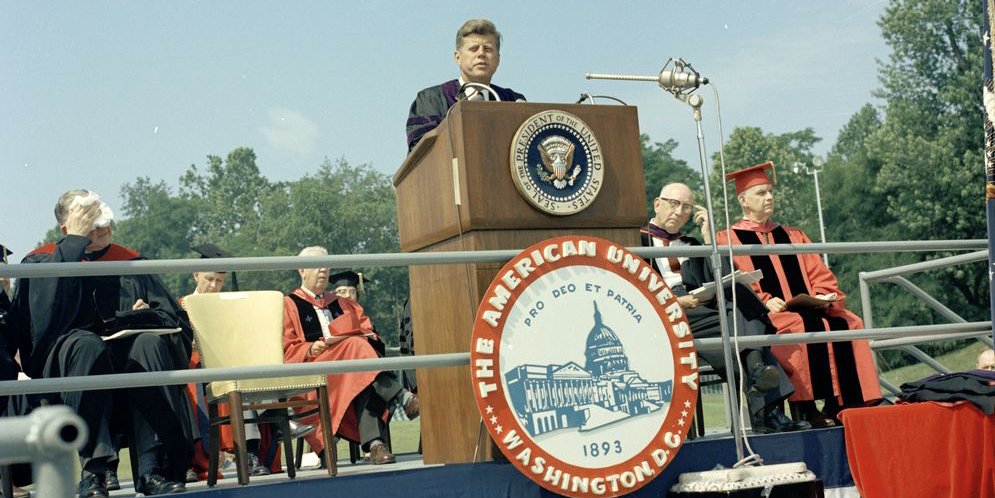
JFK's Cold War Policies
President John F. Kennedy's domestic and foreign policies can be divided into the years of 1961, 1962, and 1973. In 1961, he was just starting and face new challenges. He struggled a bit. In 1962, President Kennedy evolved to see how the military industrial complex was aggressively trying to push his to invade Cuba, invade Laos, and do other aggressive actions that would possibly start WWIII. JFK refused to embrace the Pax Americana ethic. 1963 was when he had some of his greatest moments oratorically and policy wise from standing up for a Civil Rights Bill and endorsing a long term strategy of forming peace between America and the Soviet Union. To start, it is important to go into 1961. Robert Kennedy was the Attorney General soon in 1961. JFK told RFK that he wanted him to use lawsuits in the South to attack voting discrimination. On March 6, 1961, President Kennedy signed an executive order to end discrimination in government employee hiring and contracting. By March 20, 1961, the Kennedy administration interceded in the New Orleans School District on desegregation cased on behalf of the integrationist Judge J. Shkelly Wright. He later appointed Judge Wright to the D.C. Court of Appeals. President Kennedy promoted space exploration. On May 7, 1961, astronaut Alan Shepard was the first American to achieve space flight. Later on May 25, 1961, JFK gave a speech that advocated a big space exploration program. He wanted humans to go to the Moon before 1970. He would get his wish, because Americans came to the Moon by 1969. On May 14, 1961, the Freedom Riders came into Anniston and then Montgomery, Alabama. They wanted to enforce existing law that integrated interstate bus travel. The Freedom Riders were pulled of the buses and beaten with baseball bats, chains, etc. The FBI did nothing to stop this. The Governor doubled crossed the President. So, JFK sent in 500 U.S. Marshals to rescue the protesters. President John F. Kennedy wanted the courts and the law to promote equality, but the protesters wanted both the courts and active demonstrations in order to make equality real. I agree with the protesters, because you have to use demonstrations and the courts or the legal system in getting change.
The Vienna summit between President John F. Kennedy and Soviet leader Nikita Khrushchev failed. They debated on the future of Berlin. JFK wanted West Berlin to be free and open. Khrushchev was afraid that if Germany had too much power, then a Hitler like figure would reign and fight the Soviets again like during WWII. The Cold War was more heated. There was East Germany closing its border with West Berlin. American and Soviet military forces faced each other. Then, the Berlin Wall was built. The wall was unjust and cruel, but JFK said that a wall is better than a war. JFK set up the Alliance for Progress program and the Peace Corps to expand Americanism overseas under the guise of humanitarianism. There were sincere people in the Peace Corps, so I want to make that clear. On November 22, 1961, Kennedy sent 15,000 advisors to Vietnam via NSAM 111. Advisors is code name for military people aiding the South Vietnamese forces in the Vietnam civil war. On January 17, 1962, President Kennedy signed a law that granted federal employees to form unions and bargain collectively.

March 15, 1962 was when Kennedy signed the Manpower Development and training Act to fight African American unemployment. That law saved lives and gave almost 350,000 people jobs. JFK rejected Operation Northwoods which called for the U.S. to use false flag operations in America in order to be a justification for an American invasion of Cuba. The Birmingham movement for civil rights grew from 1962 to 1963. By 1962, JFK's Medicare bill failed, and JFK took on Big Steel over economic issues. JFK supported the Laos neutralization plan as signed in Geneva. Kennedy sent in the Army and federal troops to stop white racists from rioting over the admittance of the African American James Meredith at Ole Miss. October 1962 was JFK's great movement to save humanity along with other people. The military generals and many in the intelligence community wanted JFK to attack Cuba after Soviet missiles were found in Cuba. JFK used a blockade to prevent military supplies to leave or go into Cuba. That brought time to help find a solution. The solution was an agreement of JFK to get ride of U.S. missiles in Italy and Turkey in exchange for the Soviet missiles to be removed from Cuba. Many in the military industrial complex hated JFK for this, but that agreement is better than millions of people dying in a nuclear holocaust. Vasil Arkhipov was a Soviet soldier who courageously stopped some Soviets of attacking American forces within a short span of time basically saving a large part of the human race.
Operation Mongoose or the plan to assassinate Castro was disbanded by the end of 1962. After China invaded India, JFK send a military airlift to Nehru. China retreated a day later. On November 20, 1962, President Kennedy signed an executive order that prohibited discrimination in sales and rental for housing. Khrushchev's letter to Kennedy on December 11, 1962 was the beginning of detente. JFK also support the UN trying to stop the Belgian and British goal of separation of Katanga from Congo. 1963 saw many changes in the Kennedy Presidency. JFK by this time saw many changes. The Battle of Ap Bac in Vietnam caused a loss for South Vietnam forces. On January 26, 1963, James Donovan came into America from Cuba. Castro's physician Rene Vallejo told Donovan that Castro was interested in talking about re-establishing relations with Washington. On June 10, 1963, President John F. Kennedy gave a speech at American University to promote world peace. He wanted a long term end to the Cold War with the Soviet Union. One June 11, 1963, he promoted a Civil Rights Bill and racial equality. It was a bill that was the strongest civil rights bill since the days of Reconstruction. By August 5, 1963, JFK, the Soviet Union, and Great Britain signed the Limited Atomic Test Ban Treaty. It banned above ground nuclear testing. This policy was very historic as it was an action that was progressive plus courageous. The coup of Diem was on November 1, 1963. It caused the Vietnam to spiral out of control in some respects. Diem was an American-educated brutal dictator who viciously harmed the human rights of the Buddhists in Vietnam. That is why many Buddhists protested by rallies and burning themselves in fires. By November 1963, it was the beginning of the end of the Kennedy Presidency.


John F. Kennedy's Last Moments
The end of the Kennedy Presidency was an era of transition and a new era. The Vietnam War was still under way along with his re-election campaign. November 14, 1963 was when President John F. Kennedy attended a dedication ceremony at the border of Maryland and Delaware. This was done to mark the completion of the Northeast Expressway and the Delaware Turnpike. They formed part of Interstate 95 and provided a limited access route between Baltimore and the approach to the Delaware Memorial Bridge. Both roads were renamed the John F. Kennedy Memorial Highway,a month later after his assassination. On November 18, he visited Tampa, Florida. He visited the military's Strike Command Headquarters, attended a luncheon at the officer's club, made a speech at the Florida Chamber of Commerce, and another to the United Steelworker's Union. By November 21, 1963, President John F. Kennedy asked his economic advisers to prepare for the War on Poverty for 1964. Less than 2 months after President Kennedy's assassination, President Lyndon Johnson introduced JFK's War on Poverty legislation in the first State of the Union address on January 8, 1964. 2 major pieces of related legislated were passed. They were the Economic Opportunity Act of 1964 and the Social Security Act of 1965. They were signed into law on August 20, 1964 and July 30, 1965 respectively. On November 22, 1963, President John F. Kennedy would fly to Texas to promote his 1964 re-election campaign and unite the Democratic Party of the South. When he was in Dallas, Texas, he was praised by a crowd of people. On that day, President John F. Kennedy and Texas Governor John Connally were shot at 12:30 pm. CST (or 1:30 pm. EST) in Dealey Plaza. The President was rushed to Parkland Memorial Hospital where Kennedy was pronounced death at 1 pm. CST.
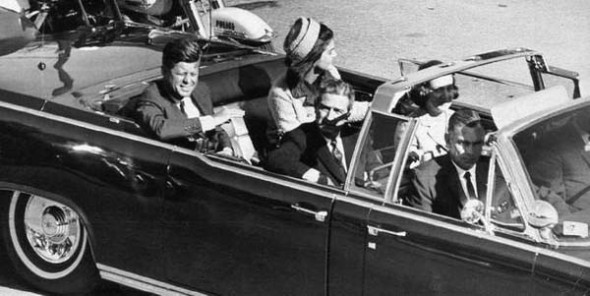
The nation would never be the same again. The nation mourned, the world mourned, and it was a very tragic time in American history. His death signified how political polarization grown to such an extend that some people would, in a cruel, evil fashion, would use assassination as a means to try to hurt others. The suspect Lee Harvey Oswald was arrested and charged with the murder. Oswald was a Marine Corps member before he defected to the Soviet Union in October 1959. He never came back to America until June 1962 with his Russian wife, Marina. He lived in Dallas. Lee Harvey Oswald was a distant cousin of the Confederate General Robert E. Lee. Oswald would be shot and killed 2 days later by nightclub owner Jack Ruby. The Warren Commission mentioned information about how Oswald did it alone. Lyndon Baines Johnson in 1969 (in an interview with the journalist Walter Cronkite) believed that Oswald did it, but that doesn't discount the possibility of others being involved. LBJ would be President on that date of November 22, 1963. The body of President Kennedy lies in state in the Capitol rotunda for 18 hours on November 24. His funeral would be on the 25th. President Kennedy was laid to rest at Arlington National Cemetery. The eternal flame (at Arlington National Cemetery. This flame was known later as the John F. Kennedy Eternal Flame) was lit by Mrs. Kennedy. First Lady Jacqueline Kennedy did this as being inspired by the Tomb of the Unknown soldier at the Arc de Triomphe in Paris. To this day, the vast majority of Americans believe that the Kennedy assassination was a conspiracy. James DiEugenio and other scholars are some of the biggest supporters of the view that the assassination of JFK was a product of a conspiracy too. During this time, the assassination of John F. Kennedy contributed greatly to the atmosphere of massive changes in the world. President John F. Kennedy's life was a life of constant change, imperfections, courage, and the idealism of what America ought to be in the midst of what it is currently.
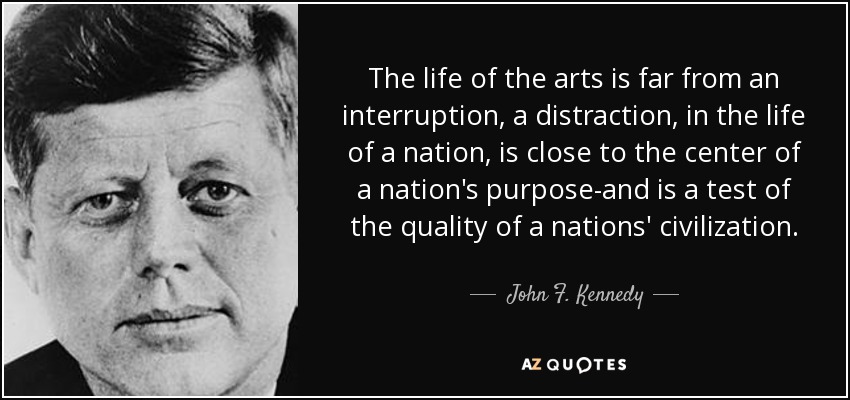
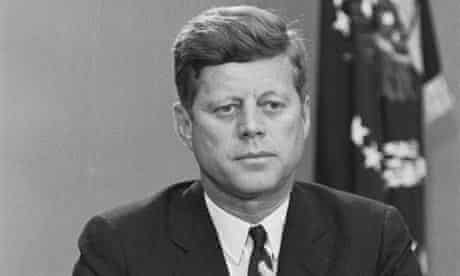
"The artist, however faithful to his personal vision of reality, becomes the last champion of the individual mind and sensibility against an intrusive society and an officious state. The great artist is thus a solitary figure. He has, as Frost said, a lover's quarrel with the world. In pursuing his perceptions of reality, he must often sail against the currents of his time. This is not a popular role. If Robert Frost was much honored in his lifetime, it was because a good many preferred to ignore his darker truths. Yet in retrospect, we see how the artist's fidelity has strengthened the fibre of our national life.
If sometimes our great artists have been the most critical of our society, it is because their sensitivity and their concern for justice, which must motivate any true artist, makes him aware that our Nation falls short of its highest potential. I see little of more importance to the future of our country and our civilization than full recognition of the place of the artist.
If art is to nourish the roots of our culture, society must set the artist free to follow his vision wherever it takes him. We must never forget that art is not a form of propaganda; it is a form of truth...."
-John F. Kennedy's speech at Amherst College on October 26, 1963
The Legacy of President John F. Kennedy
As we approach the 60 years after President John Fitzgerald Kennedy's assassination, we understand his legacy greatly. From Massachusetts to Dallas, Kennedy lived a short life. He never reached 50 years old, but he made long lasting, outstanding accomplishments. Also, he made mistakes that are well known. Everyone during that time could recall where they were when the sad passing of JFK happened. Millions of people were traumatized by the events of Dallas. The fact that the polls show John F. Kennedy as being one of the most popular Presidents in American history shows his influence even in the year of 2020. JFK was President in an unique time of American history at the peak of the Cold War. The country of the United States of America was at the brink of nuclear war against the Soviet Union on many occasions. It was the midst of the peak of capitalist expansion during the post-World War II era before massive deinudustralization happened. While the United States was a dominant capitalist power, the French empire was weakening as found in the their defeats in Vietnam and Algeria (as nationalists and other progressive stood up against Western colonial empires). John F. Kennedy represented the dual reality of American society. This dual reality means that we had high hopes for a better society and justice, while American capitalist society experienced massive poverty, racism, sexism, xenophobia, anti-Communist hysteria, and other evils despite some economic growth. American oligarchs loved their profits.
Likewise, it is important to note that Stalinist Communism was wrong for its gulags, religious liberty suppression, and suppression of even independent socialist movements in Hungary plus other places of the world. John F. Kennedy was born into a life of privilege and of the American wealthy class. Many revolutions spread the world from China to Cuba. In many ways, President John F. Kennedy lived both lives. His first life was the life of the articulate, vigorous spokesman who promoted some progressive values. His other life was the life of a diseased, suffering person who constantly committed adultery. He was both intelligent and suffering. He was both witty and contradictory at times. From his inaugural address, John F. Kennedy expressed the blueprint of his Presidency and the feelings of his conscience. He wanted to expand American interests overseas while wanting to do something about helping the poor. He tried to reconcile the democratic rhetoric of American society and the true reality of America (filled with imperialism, racial discrimination, and economic oppression). JFK's hatred of Communism was overt with his Bay of Pigs invasion advocacy, the Cuban Missile Crisis, and some of his policies on the Vietnam Civil War. Kennedy also dealt with civil rights.
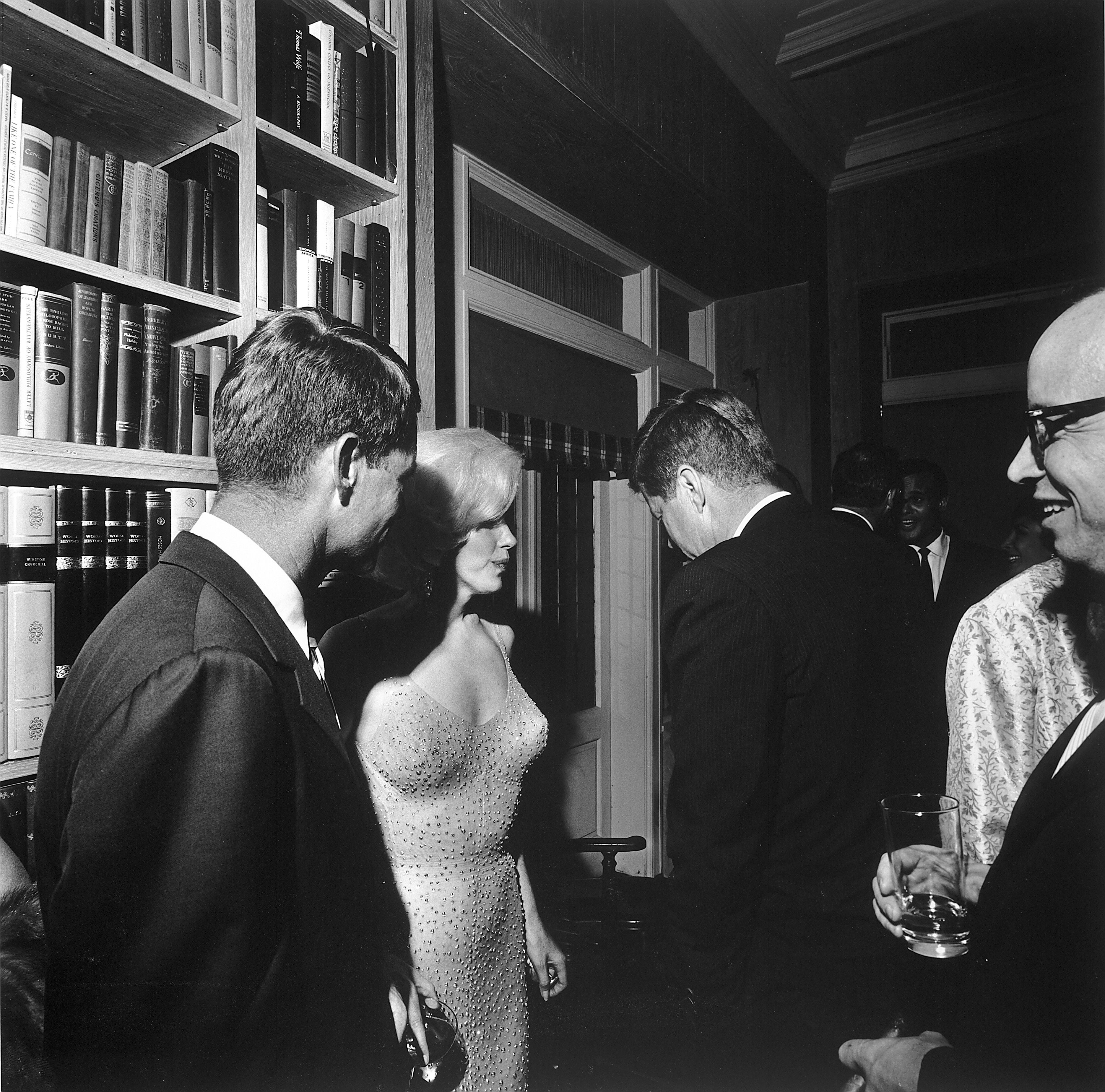


While light years ahead of Eisenhower on the civil rights issues, John F. Kennedy had to be pressured by civil rights leaders to embrace more militancy in a pro-civil rights direction. As a descendant ideologically of New Deal reformism, President Kennedy advocated universal health care for the elderly (which would be Medicare by 1965), Social Security, and public investments. He faced political divisions in the intelligence community and the economic plutocrats. JFK signing the Nuclear Test Ban Treaty was one of his greatest accomplishments along with advocating a civil rights bill in promoting racial equality on June 11, 1963. No President before gave a civil rights speech like that. While it its true that we don't know what JFK would have done involving Vietnam, all sources point to the fact that President Kennedy would have never escalated the war militarily in such a monumental fashion as his successor Lyndon Baines Johnson has done. It is no secret that the far right wing sections of the American wealthy class hated Kennedy's agreements with the Soviet Union. The end of the Kennedy Presidency ended the mystique of Camelot. That mystique was about the view that capitalism and certain foreign policies used in the right way was beneficial to humanity. We know that imperialism and capitalist exploitation are detrimental to humanity. John F. Kennedy grown to be a better man in 1963 than in 1961. President John F. Kennedy's gift was that he used his speeches and actions in trying to inspire a moral and social change. His American University speech on June 10, 1963 advocated world peace and an appreciation of our differences as human beings. On October 26, 1963, President Kennedy addressed social inequality and the role of the artists in society at Amherst College in Massachusetts. His unjust and tragic death shows us that dissent via murder is never justifiable. His passing shifted the nation unfortunately to the right (with the growth of corrupt factions of the establishment causing mayhem in the world). We saw more assassinations of more people who wanted social change in the same decade. Their names are first Malcolm X, then Dr. Martin Luther King, then Senator Robert F. Kennedy, and then Fred Hampton in 1969. President John F. Kennedy was certainly an articulate human being whose influence changed the Cold War forevermore.
By Timothy
No comments:
Post a Comment